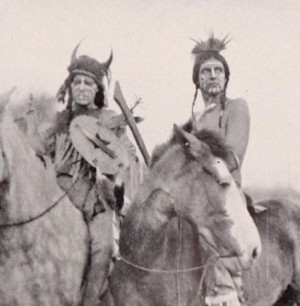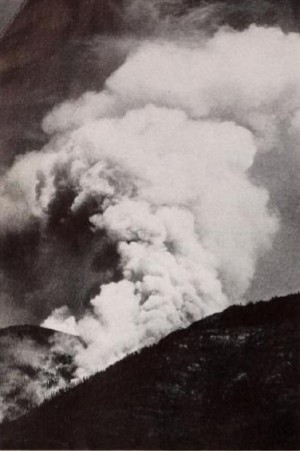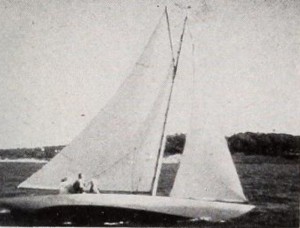
"'Red Clouds Rides Again,' the 8mm picture by Dr. Loscher which was given first prize, was based on a poem that dealt with the pioneers crossing the desert. Its main action had to do with a wagon train being attacked by Indians. The manner in which Dr. Loscher handled this sequence would have done credit to a studio production. With only one wagon, three horses and six people at his command, he made it look like a production employing more in the way of properties and talent. His angles, his composition and his cutting are things for every amateur to observe. His story could have easily become hackneyed by poor cutting and editing, but he kept it moving at a fine tempo." American Cinematographer, Jan. 1936, 24.

"To publicize fire prevention work of the U.S. Forest Service, R. P. Ewing, A.C.L., New York City, working in cooperation with K. D. Swan of the Service, Missoula, Mont., has, with the assistance of Frank Foltz, completed Red Hell of the Kaniksu, 400 feet, taken in the St. Joe, Kootenai and Kaniksu National Forests." Movie Makers, June 1932, 254.
"The Red Ring, from Japan, tells the story of a young girl who buys a red ring and buries it on the hillside. Years later, as a young woman, she retells the story through flashbacks. Finally she goes to dig up the ring to tie in with the glimpses of herself as a young girl" PSA Journal, Aug. 1967, 37.
"Red Sand, a carefully edited study of bull fighting, is another reel, which will run just over 200 feet selected from the 1000 feet that was shot." Movie Makers, Feb. 1933, 50.
"An unusual experiment in form, motion and color. It was obtained by filming light patterns created on a translucent screen. The use of spotlights, reflectors, prisms, color filters and various home made gadgets, plus a background of organ music provides an interesting departure from conventional filming." PSA Journal, Dec. 1955, 35.
"Red Type is a novelty in animation. To describe the film would rob the viewer of much of the surprise element which adds a lot to the entertainment value of it. Let's just say this little gem was made from A to Z on a typewriter, both visually and audibly" PSA Journal, Sept. 1965, 51.
"Orme gave his picture a great deal of interest by the titling." American Cinematographer, Feb. 1936, 73.
"Reel Meal concerns the life of one meat ball, and is filmed to fit the tune of "On Top of Old Smokey." As a chorus sings specifically written words about one poor meat ball that got away, the scenes, cut to fit, record the antics of the fugitive from a plate of steaming spaghetti. A refreshing novelty well done" PSA Journal, Sept. 1964, 51.

"In Reflections, Henry E. Hird has followed the intelligent practice of revising footage shot when film was more plentiful, with the result that he has created a new and interesting synthesis by editing. On a winter evening, a man reflects on the joys and adventures of a past summer. Of an athletic disposition, he has swum, sailed and hunted. Interested in wild life, he has observed and filmed birds. From time to time, he adjusts a radio, to find music that expresses the moods of his reverie. Finally, he turns off the radio, the musical accompaniment ceases and the film ends in silence. With excellent cinematography and with a nice editorial sense, Mr. Hird has gathered interesting events into an entertaining whole." Movie Makers, Dec. 1944, 496.
Total Pages: 299